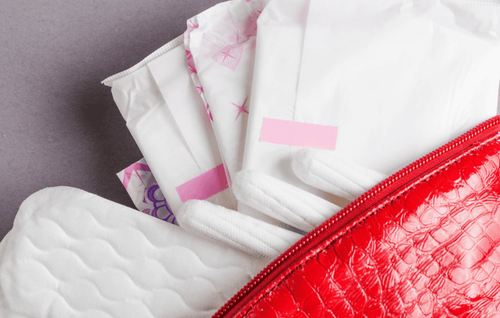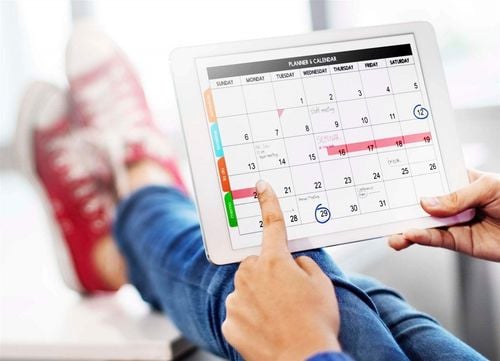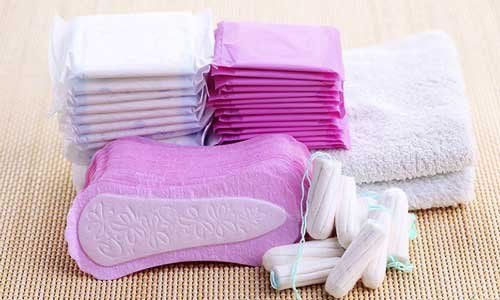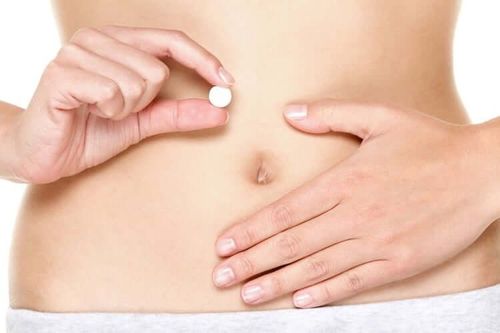This is an automatically translated article.
The use of tampons is considered a fairly simple task for most women. However, improper use of tampons can cause some gynecological diseases because not all women know how to use them correctly, leading to great effects on women's health.1. What are tampons?
Tampons are one of the methods of menstrual absorption during the menstrual cycle. Tampons are designed to be inserted into the vagina with or without a lubricating device.You may be surprised to learn that the FDA regulates tampons as medical devices. Sanitary pads are FDA approved for single use and then throw away. Do not use tampons more than once.
Trắc nghiệm: Sự hiểu biết của bạn về kinh nguyệt
Kinh nguyệt có vai trò quan trọng đối với sức khỏe sinh sản, do đó nữ giới cần chủ động trang bị kiến thức để theo dõi và kiểm soát tình trạng sức khỏe. Bài trắc nghiệm sau đây sẽ giúp bạn hiểu hơn về chu kỳ kinh nguyệt của bản thân.2. What are Tampon pads made of?
FDA-approved tampons are made of cotton, rayon, or a mixture of the two. Today's tampons are made from absorbent fibers made with an FDA-approved chlorine-free bleaching process. This also prevents products with dangerous levels of dioxins (a type of pollutant found in the environment).3. How does FDA assess the safety of tampons?
Before any tampons can be legally sold in the US, they must go through an FDA review to determine if they are as safe and effective as (equivalent to) tampons sold. on the legal market or not.During the FDA review, manufacturers submit data including test results to assess the safety of the materials used to manufacture tampons (if applicable); absorbency, strength and integrity of tampons; whether tampons promote the growth of certain harmful bacteria or change the normal level of bacteria in the vagina.
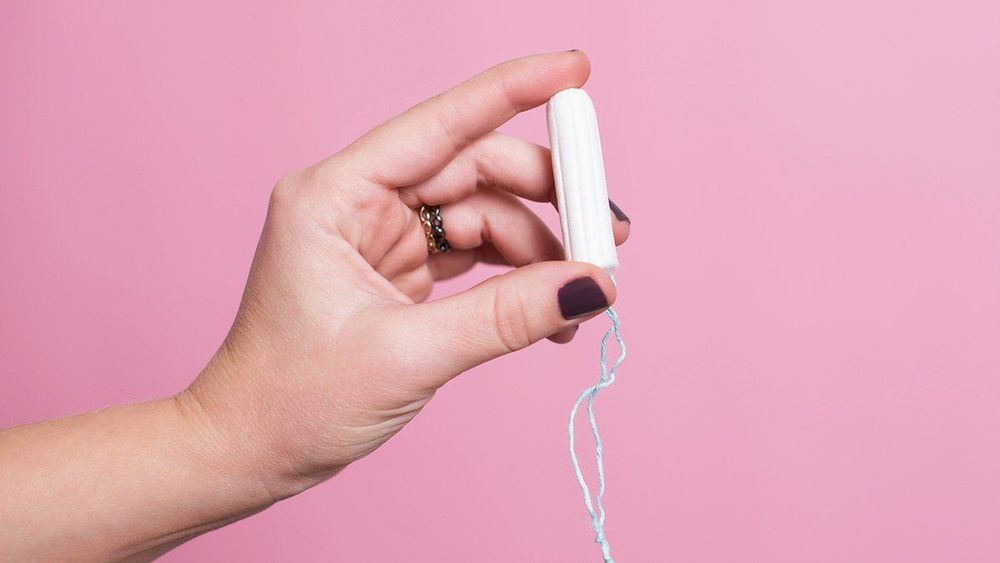
Tất cả các loại băng vệ sinh trước khi đưa ra thị trường đều phải trải qua quá trình đánh giá nghiêm ngặt của FDA.
4. How to use tampons
Before you start using it, you must be familiar with the construction of the tampon and the lubricator. For new users, it is recommended to use a tampon with a cord. These are usually made of cotton, rayon or organic cotton.Tampons are shaped like a small cylinder, the shape fits inside the vaginal canal. Tampons compress and expand when wet. The tampon cord is the extension on the outside of the vagina, so you can pull it to get the tampon out. Sometimes, if you use a large tampon, you may have to take a plunger and push it into place. The pistons are located on the outside of the tampon. Hold the hilt with your fingertips and place another finger on the end of the plunger to allow the tampon to enter your vagina.
The use of tampons with lubricants or not depends on individual preferences. Some tampons are easier to put on than others. Normally, your period is enough to lubricate your vagina and insert a tampon. If you are using tampons with low absorbency and are having trouble inserting the tampon, you can add more lubricant.
Here's how to use tampons:
Step 1: Wash your hands thoroughly. You need to make sure you're not spreading any germs inside the vagina, even if you think you won't have close contact with the labia.
Step 2: If this is your first time, you may need a visualization. You can use a hand-held mirror and sit in a comfortable position. For some people, the squat position with the legs bent is the most appropriate position. For others, it's sitting on the toilet. When you feel comfortable, it's time to put on the tampon.
Step 3: Find the vaginal opening and insert the applicator tip first. Gently push the plunger all the way in to release the tampon inside the vagina. Once you have the tampon installed, you can remove the applicator and remove the cover.
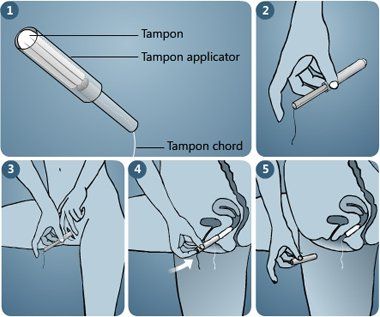
Hướng dẫn sử dụng băng vệ sinh tampon.
5. What if you are using non-lubricated tampons?
This is a slightly different process. Instead of inserting the applicator, you'll use your fingers to push the tampon into your vagina.First, wash your hands. It is especially important to wash your hands because you will be putting your fingers inside the vagina. Unpack the tampon from the package and sit in a comfortable position. Then, use your finger like a plunger and push the tampon inside the vagina. You may have to push it further than you think to get it in a safe position. If you insert the tampon correctly, you won't feel anything. But if you don't insert the tampon far enough, you can end up feeling extremely uncomfortable. For more comfort, use a clean finger to push the tampon deeper into the vaginal canal. As you move and walk, it may even move around and settle into a more comfortable position after a while.
6. Change tampons how often?
According to the FDA, it's best to change tampons every 4 to 8 hours. Tampons should not be used for longer than 8 hours. If you remove it before 4 to 8 hours it's ok. Just know, tampons probably won't absorb much. If you find yourself bleeding profusely before 4 o'clock, you may want to try one with a thicker absorbency.You are at risk of toxic shock syndrome (TSS) if you wear tampons for longer than 8 hours. Although very rare, TSS can cause organ damage, shock, and in some cases even death. The FDA has reported a significant drop in tampon-related TSS cases over the past 20 years. However, this does not mean that it has completely disappeared. To reduce your risk of TSS, make sure not to wear tampons for longer than recommended. Do not use more absorbent tampons than necessary.
7. How to remove the tampon?
First, you still need to wash your hands. You might think you won't get any germs near your vagina just by pulling a string, but it's better to wash it off just to be on the safe side.Next, sit in a comfortable position as you chose earlier. This way, it's easier for you to remove the tampon. Now gently pull the end of the tampon to pull the tampon out.
Once out of the vagina, carefully wrap the tampon in toilet paper and throw it in the trash. Most tampons are not biodegradable. Do not flush tampons down the toilet. Finally, wash your hands again and use a new tampon, switching to a pad if you're at the end of your period.

Nên thay băng vệ sinh tampon từ 4 đến 8 giờ một lần.
8. Are reusable tampons safe?
The risk of infections such as yeast, fungal, and bacterial infections can be increased if reusable tampons are used.Although you may have heard of reusable tampons, the FDA has not yet approved these products. The FDA discourages the use of reusable tampons. The only FDA-approved tampon designed for single use.
9. Can you have sex while using tampons?
It is best to remove the tampon first. If left on, you can push the tampon deeper into the vaginal canal, causing potential discomfort. If you don't want to remove the tampon, sexual activities such as oral and manual stimulation are fine.Just like riding a bicycle, putting on and taking off tampons takes practice. It may feel a bit strange at first, but once you get used to the steps as the instructions, you'll quickly feel it's not that difficult.
Remember, tampons are not the only option. There are other methods of menstrual care, such as traditional tampons, menstrual cups, and even menstrual underwear.
If you feel constant pain or develop unusual symptoms after using or removing tampons, consult your doctor. You may be having a problem that requires medical help.
Please follow the website: Vinmec.com regularly to update many other useful information.
Please dial HOTLINE for more information or register for an appointment HERE. Download MyVinmec app to make appointments faster and to manage your bookings easily.
References: healthline.com, fda.gov



